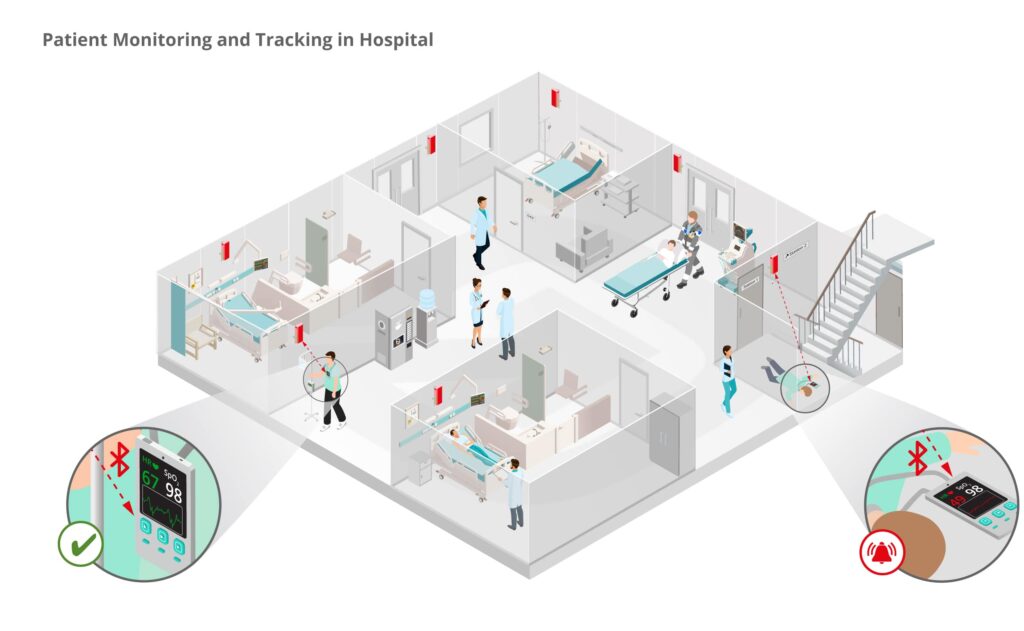With the help of an Indoor Positioning System (IPS) a complete monitoring of the vital signs of a patient without data loss and additional set-up times can be guaranteed. This increases safety and ensures better patient and staff satisfaction.
AT A GLANCE
- server-side positioning of patients in case of danger
- real-time patient health monitoring
PROBLEM DEFINITION
A large hospital complex has numerous departments on several hundred thousand square meters on which many patients are located. Keeping an overview of each individual’s vital signs and being at the emergency room in time in the event of a medical emergency cannot always be guaranteed. If a patient’s saturation level drops during a walk, the clinic staff does not know the location and current vital signs of the unconscious patient. At first, they usually do not know what is missing in the critical patient, whether saturation drops, blood pressure drops or heart rate fails.
SOLUTION
In hospitals, a tracking system can guarantee optimum protection and freedom of movement for critically ill patients. Telemetry devices located around a patient’s neck are equipped with Bluetooth Low Energy Beacons so that the location of the respective device and thus also automatically the patient’s position can be located.
In addition, the patient’s vital data (heart rate, SpO2 and blood pressure) can be read directly on a device or via a browser application. In an emergency, for example when a patient’s blood pressure or saturation drops, an alarm is automatically triggered and the hospital staff is informed. If the patient is not in his original ward during the incident, the nearest nurse will still be informed.
TECHNICAL IMPLEMENTATION
Bluetooth Low Energy (BLE) beacons are used to locate the patient and transmit his vital signs. These battery-powered, disinfectant-resistant hardware components are integrated into the telemetry devices. The position is determined via the network of infsoft Locator Nodes distributed evenly throughout the building. The Locator Nodes receive the Bluetooth signals and send the data to the infsoft LocAware platform®. Here the position is calculated and provided via web services. A browser application gives hospital staff access to the data and can retrieve the patient’s location and vital signs.







